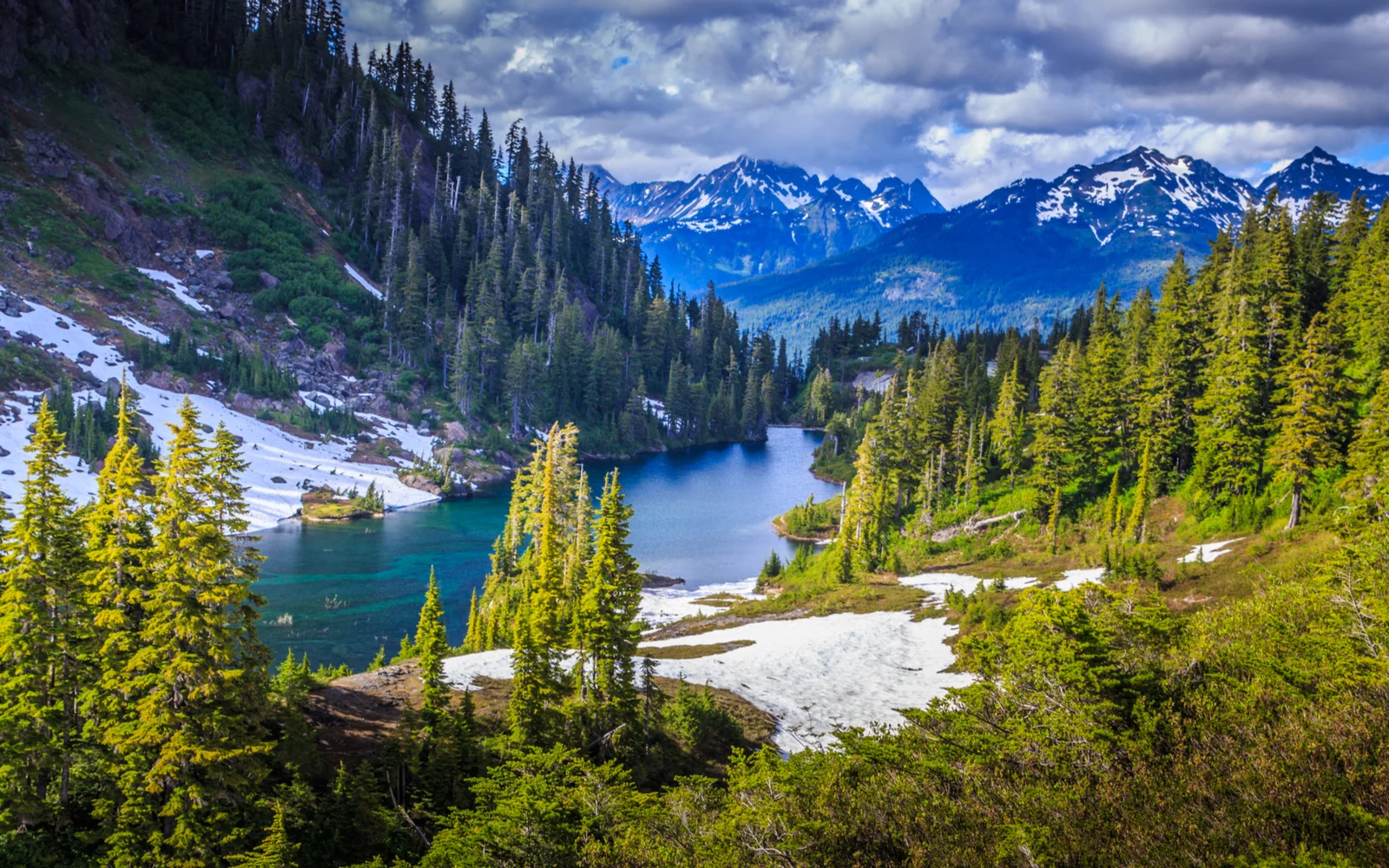What's the best time to visit Glacier National Park?
Your best bet for visiting Glacier National Park is during the summer months, from June to August. The weather is warm, most park roads are open, and it’s the prime time to explore. However, if you prefer fewer crowds and are open to cooler weather, consider May or September through October as less busy, yet enjoyable times to visit.
Glacier National Park is a million-acre national park with so much to offer visitors of all ages and ability levels. From stunning views of glaciers and epic vistas to raging waterfalls and rocky cliffs that open up to tranquil glacial lakes, you’ll leave knowing you’ve witnessed one of the most beautiful places on the planet.
Upon arrival, you’ll be greeted by:
- Incredible scenery, glaciers, and glacial lakes
- Hike 700+ miles of trails from easy to strenuous
- Diverse range of wildlife to spot and photograph
- Ranger-led activities + guided hiking, boat, and wildlife tours
- Rafting, zip lining, skiing, snowboarding, and more
For these reasons, we think that this park deserves a spot on your travel bucket list. This national park in Montana has some of the most incredible views with diverse landscapes and stunning scenery.
There are 26 named glaciers in the park and countless unnamed, smaller glaciers. Only North Cascades National Park has more glaciers in the contiguous United States! But while there’s countless things to see and do, when is the best time to visit Glacier National Park? Here’s our take.
The Best Time to Visit Glacier National Park
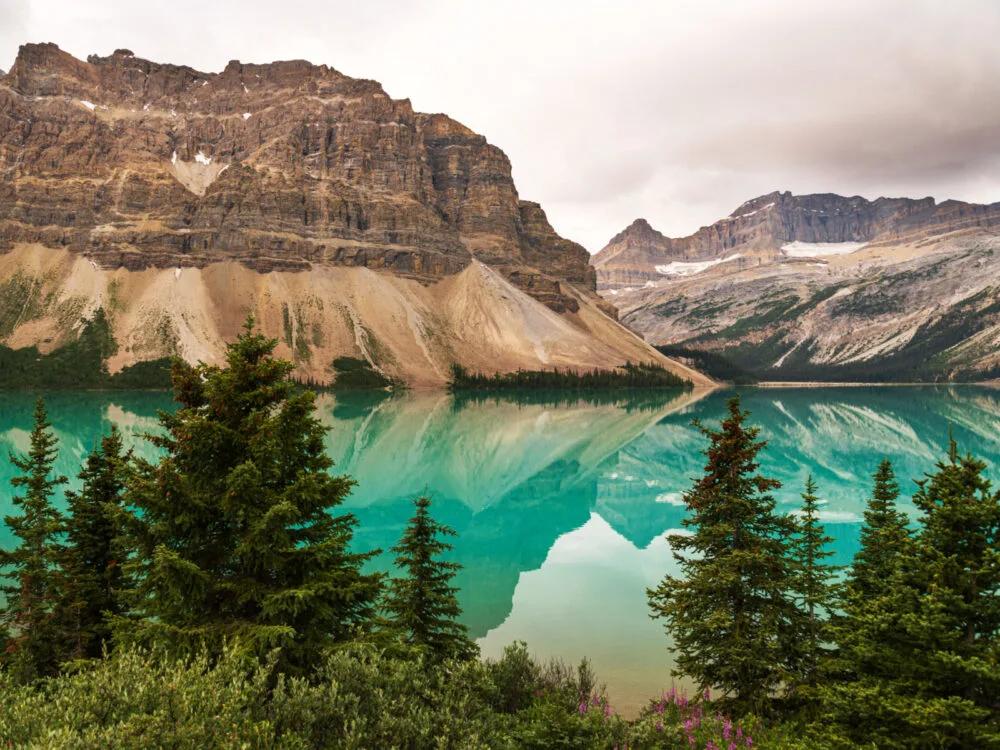
Moreno01/Shutterstock
The best time to visit Glacier National Park is summer, from June to August. The weather is warmest (though the water is always icy cold), most or all park roads are open and clear of snow and ice, plants and wildlife are thriving, and visitors are pouring in to see GNP at its peak.
You’ll enjoy the warmest weather in July and August with highs in the low 80s and lows in the 40s. During the summer, the park’s well-known Going-to-the-Sun Road opens up to connect the east and west sides of the park.
This makes it easy to travel through the park with scenic views surrounding you along the way. Families love the summer activities like camping, rafting, fishing, relaxing on the beaches of the glacial lakes, and hanging out at the mountain resorts in the area.
There’s only one downside to the visiting Glacier National Park at the best time – you definitely won’t be alone.
Everyone flocks to the park in summer because it really is the ideal time to go. Plan to set out early each morning (seriously – prior to 7am if you want to get a parking spot at some of the most popular trailheads) and you’ll be fine.
- June-August is the best time to visit
- Most park roads are open and summer is in full swing
- The park is busiest at this time of year
Cheapest Time to Visit Glacier National Park
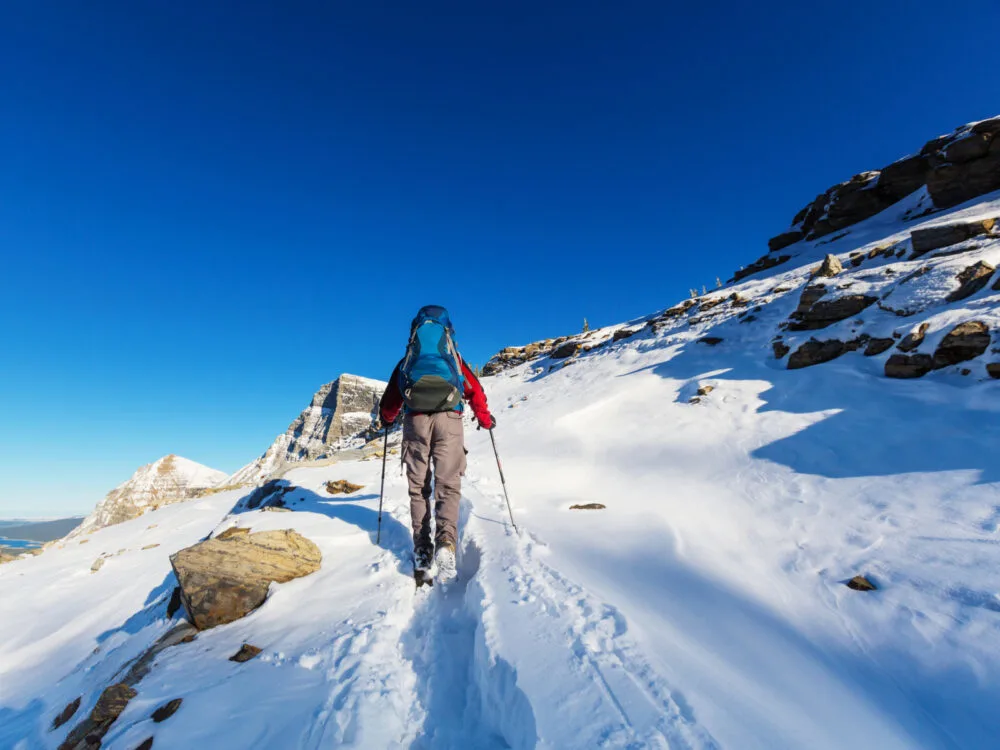
Galyna Andrushko/Shutterstock
The cheapest times to visit Glacier National Park are in the winter and spring, from November through April. If you visit during these colder months, you’ll pay a reduced entry fee when entering the park and save money without having to pay vehicle registration fees.
In summer, it usually costs $35 for a 7-day pass to enter the park per vehicle. You’ll also have to register your vehicle ($2 fee) to drive the Going-to-the-Sun Road that connects both sides of the park.
But by visiting in winter and spring, you get to avoid the vehicle registration fee because the connecting road is closed. You’ll also pay a reduced entry fee of $25 instead of $35.
For adventurous campers who don’t mind the chill, camping is free at GNP in winter – more money saved on your trip! Lodging within the park is closed, but there’s plenty of lodging and hotel options just outside the park.
These hotels drop their rates in winter since fewer visitors make their way here this time of year. Visit in April in time for National Park Week, when entry is free to every national park in the United States!
You’ll save about $25 by visiting during National Park Week, making your trip even cheaper. The weather gets cold during the winter and spring in GNP.
November’s highs in the upper 30s (lows in the mid-20s) to April’s highs in the mid-50s (lows in the 30s) are chilly at best and frigid at worst.
January is typically the coldest month of the year here, and in the dead of winter, the park’s convenient shuttle services, visitor centers, and many trails are closed for the season. The cheaper winter/spring months are best if you’re planning to ski or snowboard at the resorts in the park.
But for hiking and general exploration, pay a little more to visit during the late spring/early summer for better weather and to access more trails, the shuttle service, in-park lodging, and more.
- November-April is the cheapest time to visit
- Cheaper winter pricing is in effect
- Roads, trails, shuttles, and lodging may be closed
Least Busy Time to Visit Glacier National Park
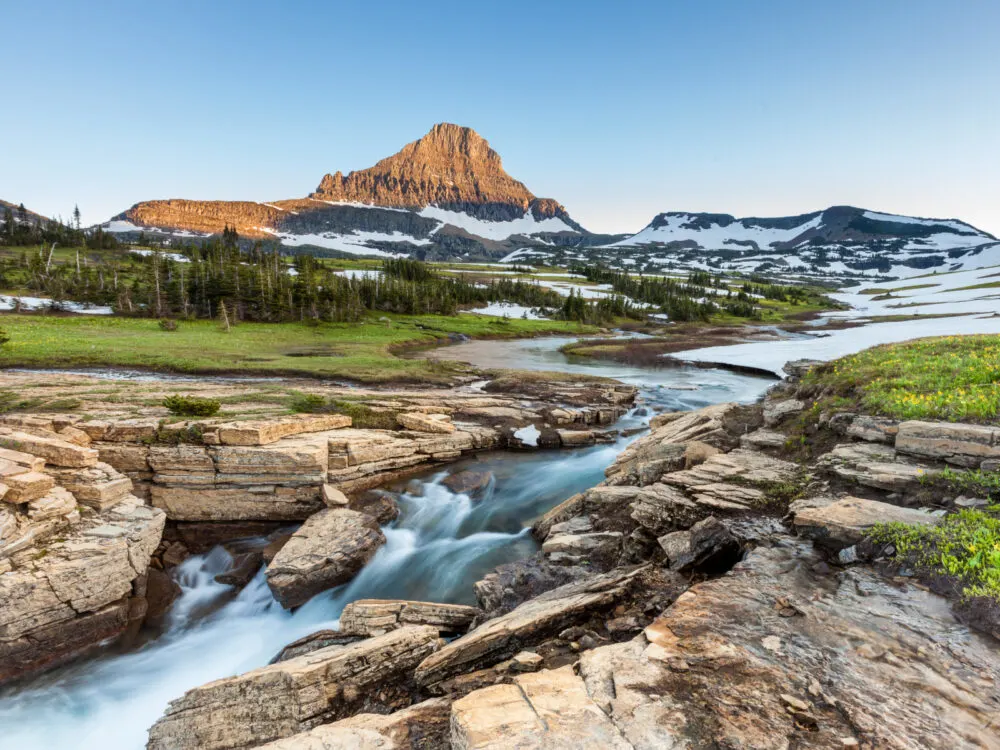
kan_khampanya/Shutterstock
The least busy times to visit Glacier National Park are in May and September through October. May is the start of the peak summer season, but it’s much less crowded than June, July, and August.
September marks the end of the peak season, giving way to milder temperatures and less-crowded trails and roadways. If you visit in fall, you’ll be treated to a stunning display of color in the changing foliage!
May’s temperatures in GNP typically reach highs in the mid-60s with lows in the upper 30s. If you wait and go in the early fall, it starts off warm in September (highs in the low 70s) and drops down to the chilly mid-50s with overnight lows in the 30s by October.
After Labor Day in early September, many of the park’s convenient services shut down for the season. That includes in-park lodges, restaurants, stores, and shops.
The famed Going-to-the-Sun Road usually closes down in mid-October. Higher-altitude trails and passes may be closed in May and September-October, depending on the weather that year.
You may still see snow and ice (some making roads and trails impassable) all the way through July in some areas of the park, so this isn’t uncommon. If you’re visiting in September or October, keep an eye to the skies at night for a chance to see the Northern Lights.
They are most visible in the park from September through April, so you’ll have a good chance of seeing the beautiful aurora borealis at this time of year!
- May and September-October are the least busy months
- Enjoy smaller crowds and cooler weather
- Some park conveniences are shut down for the season
Worst Time to Visit Glacier National Park
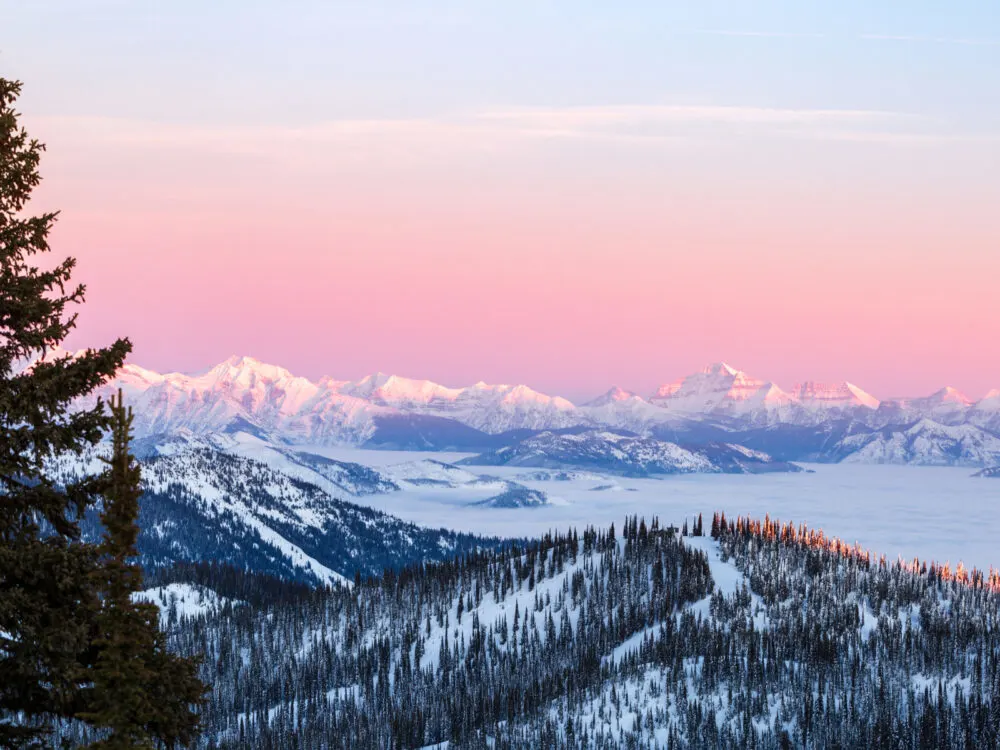
davidmarxphoto/Shutterstock
The worst time to visit Glacier National Park is from December to March, the coldest months of the year and the overall most challenging time to visit.
The dead of winter is not without its charms for certain visitors, but it’s definitely more of a hassle to go at this time of year. Temperatures won’t get above freezing here from December until February, when highs begin to reach into the mid-30s.
That’s great news for skiing, snowboarding, and snowshoeing enthusiasts, but not so much for hikers, bikers, and campers.
December and January also hold the title of the rainiest/snowiest months of the year in Glacier National Park, making planning outdoor activities a little more difficult.
Many roads and trails are closed for the entire winter season, including most of the Going-to-the-Sun Road that connects the east and west sides of the park. Most in-park lodging is closed (except for the ski resorts).
The free shuttle service doesn’t run during the winter and you’ll find that the restaurants and shops in the park are closed. It’s not the best time of year to go, but December through March can be a good time to visit GNP if you’re planning on snow sports.
- December-March is the most challenging time to visit
- Coldest weather of the year with highs from 29ºF-42ºF
- Lots of closures (roads, trails, lodging, shuttles, etc.)
Glacier National Park by Month: Climate & Activities
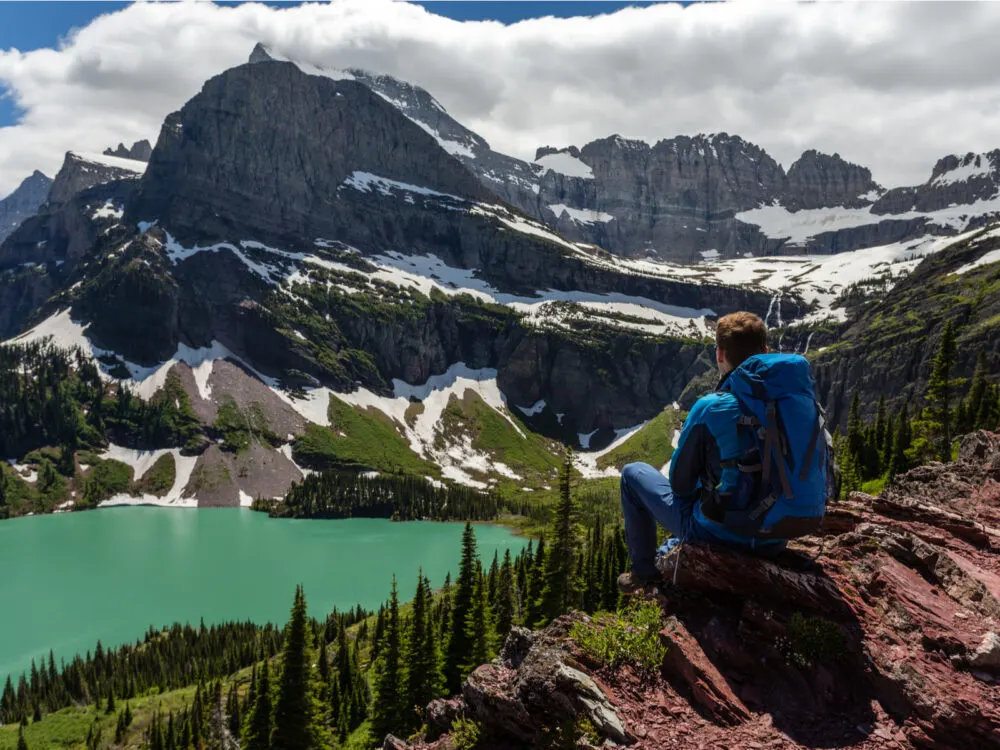
Stefan Wille/Shutterstock
Still unsure about the best time to visit Glacier National Park? Take a look at our summary of the weather and climate by month below:
January
Winter temperatures in Glacier National Park range from -10 to -2°C (14-28°F). It’s a serene time for snowshoeing, cross-country skiing, and wildlife watching in a snow-covered landscape.
February
Similar to January, February maintains cold temperatures between -8 to 0°C (18-32°F). Visitors can enjoy winter sports like ice skating on Lake McDonald and participating in ranger-led snowshoe walks.
March
As spring begins, temperatures range from -6 to 4°C (21-39°F). March is ideal for snowshoeing and cross-country skiing, and some lower elevation trails start to become accessible as snow melts.
April
Spring temperatures in Glacier National Park range from -1 to 9°C (30-48°F). It’s an excellent time for wildlife viewing, as animals become more active, and lower elevation trails become more accessible.
May
May sees temperatures ranging from 4 to 14°C (39-57°F). It’s a great month for exploring the park’s iconic Going-to-the-Sun Road as it starts to open, and for witnessing the emergence of wildflowers.
June
Summer arrives with temperatures between 10 to 20°C (50-68°F). June offers opportunities for hiking, boat tours on Lake McDonald, and scenic drives along the park’s picturesque roads.
July
July maintains mild temperatures from 13 to 24°C (55-75°F). It’s a peak month for tourism, with visitors enjoying hiking trails like the Highline Trail and taking boat trips on the park’s lakes.
August
Temperatures in August range from 12 to 23°C (54-73°F). It’s an ideal time for exploring the Many Glacier area, hiking to iconic spots like Grinnell Glacier, and attending ranger-led programs.
September
As fall begins, temperatures range from 7 to 17°C (45-63°F). September offers a pleasant transition, with fall foliage beginning to appear, fewer crowds, and continued opportunities for hiking.
October
October sees temperatures ranging from 1 to 10°C (34-50°F). It’s a great month for experiencing fall colors, wildlife watching, and enjoying the quieter atmosphere before some facilities close for the winter
November
Fall temperatures range from -5 to 4°C (23-39°F). November is perfect for photographers capturing the snowy landscapes, and some lower elevation trails may still be accessible.
December
Winter returns with temperatures ranging from -8 to 1°C (18-34°F). December brings opportunities for winter sports, snowshoeing, and enjoying the quiet beauty of the park covered in snow.
Things to Consider
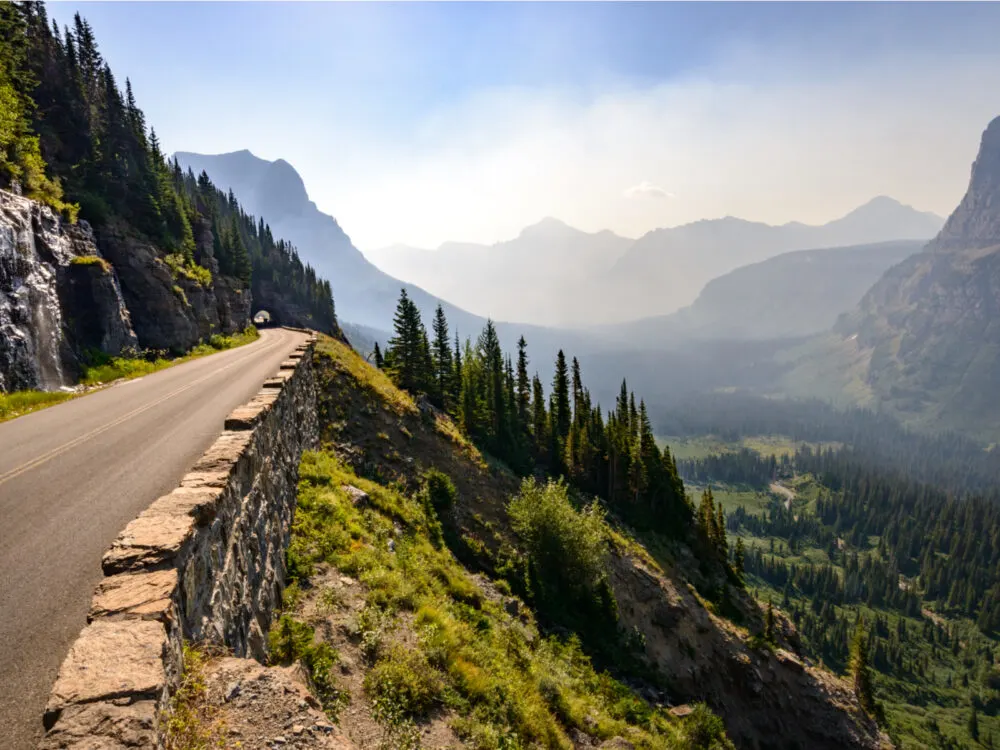
Zack Frank/Shutterstock
Making the most of your trip to Glacier National Park starts with knowing the best time to visit, but what else should you keep in mind for your stay? Here are a few helpful travel tips to help you have the best experience at GNP:
- Use the shuttle service. GNP runs a free shuttle service along the Going-to-the-Sun Road during the spring and summer months. It’s the quickest, most convenient way to get to the many sites and landmarks around the park. The shuttles fill up fast since this is the busy season for the park, so you may have to wait for the next shuttle if all seats are filled. Shuttles run every 15-30 minutes from around 8am-7pm, are wheelchair accessible, and have bike racks. No pets, open alcohol containers, or smoking is allowed on shuttles.
- Hike the trails less traveled. The top 10 trailheads in the park (including the Highline Trail, Grinnell Glacier, and Avalanche Lake) are the busiest trails, especially in summertime. Hike less-traveled trails for a more serene hike and better photography opportunities. Set out early – around sunrise – to hit the busier trails before the peak crowds arrive.
- Check seasonal road closures before you go. Roads and trails in the park close seasonally as snow and ice makes passage difficult or dangerous. Before you go, check the GNP website or Facebook page to see the current road closures, plow status, and trail status for some of the more popular trails. By learning about closures in advance, you can find alternate routes or plan to explore the outer areas of the park instead.
- You may need to register your vehicle when you arrive. The Glacier National Park Vehicle Reservation System requires visitors to register their car from the end of May through mid-September. You’ll only need to register and pay the $2 fee if you’re driving the Going-to-the-Sun Road Corridor or North Fork Vehicle Registration Areas from late May to mid-September.
- Get familiar with entry fees. Don’t get caught off-guard with unexpected fees when you’re planning your trip! You’ll pay anywhere from $15 (single person, one-time entry in winter) to $35 (7-day group entry in summer) to enter and enjoy Glacier National Park. You can buy your pass online to simplify the process once you get there! Learn more about GNP fees and passes here.
- Put safety first, always. Frigid waters at Glacier National Park can quickly lead to hypothermia, even in summer. The swift-moving streams and rivers pose a threat if you’re hiking close to the water’s edge. Dangerous wildlife (especially bears), steep cliffs, and bitterly cold, icy conditions in the winter months are more reasons to keep your wits about you while visiting or camping and always put safety first.
So, When Should You Visit Glacier National Park?
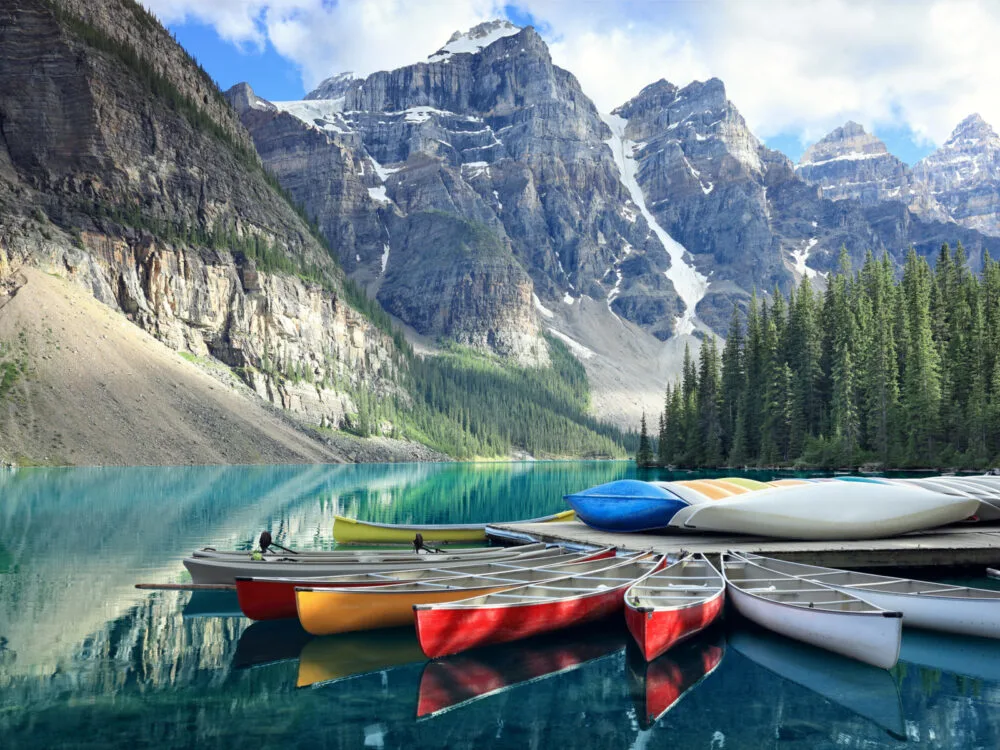
Brian A Jackson/Shutterstock
We’ve covered a lot of ground in this guide – but nothing quite like the million acres of the Glacier National Park. If you can swing a summer trip, especially in July or August (the warmest, driest months), it really is the best time to visit Glacier National Park.
From incredible views of blue glacial lakes with snowy peaks in the background to thrilling activities that let you experience GNP first-hand, this is a bucket list trip you don’t want to skip.
Want to learn about some of the other beautiful national parks in the U.S.? Once you experience Glacier, you’ll be ready to plan your next national park trip ASAP! Check out these guides next:



